« November 2012 | Main | January 2013 »
December 30, 2012
Coffee Break

Albert Dekker and Marilyn Monroe in As Young as You Feel (Harmon Jones - 1951)
Posted by Peter Nellhaus at 07:22 AM
December 27, 2012
Sexy Line

Sekushî chitai
Teruo Ishii - 1961
Beam Entertainment DVD
The last Line movie by Teruo Ishii begins quite promisingly with a jazzy score and a title sequence made up of collages with pictures that appear to be ripped from the so-called men's magazines. One can call this film noir, but there;s also the spirit of screwball comedy mixed in.
A guy named Tetsu runs into a female pickpocket, Mayumi. She's snatched his wallet, while he's the one caught by the police for being her accomplice. Tetsu's troubles only worsen when he's ordered to transfer to the Osaka branch the following Monday, and it turns out that his fiancee, Reiko, not only worked secretly as a prostitute, but got murdered for trying to go free-lance. Tetsu gets framed for his fiancee's death, probably making his wish that he was stuck in the poky for another day. Tetsu runs into Mayumi, and the two spend the weekend trying to clear his name.

The "sexy" comes from a couple of suggestive shots of Reiko entertaining a couple of her customers, as well as the scenes taking place in the "sketching club", where men gather around nude women, with paper and pencil in hand. The nudity is mostly suggested, with the camera frame just below the shoulders, or cloth carefully draped. One of the more imaginative shots has the back of one of the women obscured by a tactfully positioned electric fan blades. For those men with the interest and money, the models are available for more personal services.
Ishii takes his camera to the streets of Tokyo, in the Ginza and Asakusa districts. Even at night, the bright lights of the city can be very bright. But there is also a nice scene of Tetsu seeking a bar in one of the very narrow alleys of Tokyo, where often tiny bars are crammed next door to each other in claustrophobic spaces. The hand held camera work gives Sexy Line a documentary feel.
Yoko Mihara, appears here as the pickpocket Mayumi. A fixture during the last years of Shintoho, Mihara especially works her goofy charm when she blames her troubles on a finger that can't help but finding its way into other people's pockets. It's rare when an actress can mug for the camera, and her facial expressions become more ingratiating than annoying. This is a film with several small visual pleasures, and enough sense of humor about itself to allow for an improbable police rescue as the result of a note written on a paper airplane, and Mayumi, about to be a gangster's victim, carefully explaining why it would be in the criminal's best interest to postpone her death until a time when gunshots would be less conspicuous.

Posted by Peter Nellhaus at 08:15 AM
December 25, 2012
Merry Christmas!

Peeter Jakobi and Onni Tommila in Rare Exports: A Christmas Tale (Jalmari Helander - 2010)
Posted by Peter Nellhaus at 06:28 AM
December 23, 2012
Coffee Break
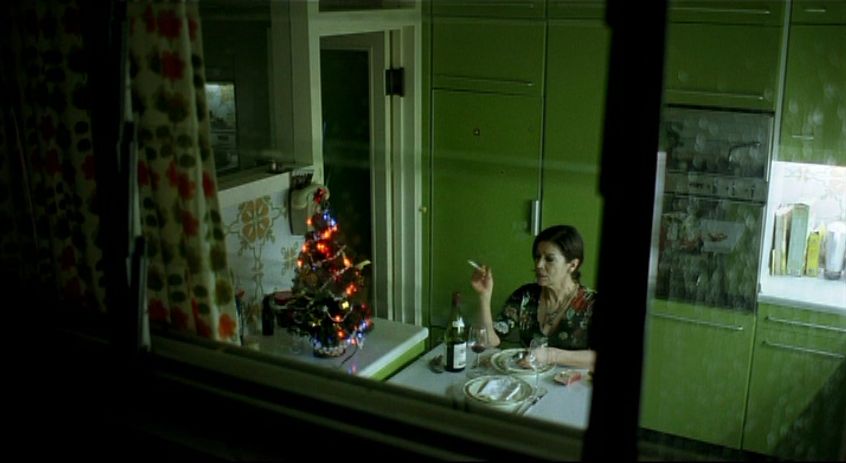
Hannelore Elsner in Vivere (Angelina Maccarone - 2007)
Posted by Peter Nellhaus at 08:05 AM
December 20, 2012
Yellow Line

Osen Chitai
Teruo Ishii - 1960
Beam Entertainment DVD
Some might gripe about the various plot threads being too neatly coincidental, parallel lines that eventually get tied in one neat ending. For myself, Yellow Line is a nifty little thriller that goes in unexpected places visually.
The basic story is of a hitman who's cheated out of his payment. Spotting a woman in a phone booth, he pretends to be with her while being pursued by the Tokyo cops. The hitman more or less kidnaps the woman, Emi, by taking her with him to Kobe, except that she was planning on going there anyways, for a dance gig. The Emi's boyfriend, a reporter, Toshio, thinks there's something fishy about the fly by night company that hired his girlfriend, and talks his boss into checking out their main office, possibly a front for a prostitution ring, which is in Kobe, also home of the hitman's victim.

Teruo Ishii's narrative is the stuff of B movies. The action mostly seems to take place during a perpetual twilight. I have to assume there was a conscious decision here in the use of the color red. There is a close-up of Emi's shoes, bright red. She "accidentally" kicks one shoe off just before the train to Kobe departs, providing a clue to her whereabouts. Emi stands out with her red dress and hat. There are also bursts of red with flowers and blood.
The other use of color is of the type to raise the eyebrows of a western audience. One of the characters, a prostitute called "The Moor" is the least convincing caucasian in blackface. Only another "Moor", Laurence Olivier as Othello would be strike me as worse, as I kept on expecting him to break out and sing, "Mammy" and other hits from the Al Jolson songbook. There is also a nightclub scene with several Japanese men, also in blackface, part of some kind of jungle number, with Emi as the featured performer. This is the kind of stuff that needs to be accepted with a grain of salt, or maybe a full shaker.
Ishii wouldn't be the only Japanese filmmaker with an interest in French movies. Much of the action takes place in a part of Kobe called "The Casbah", a direct reference to Pepe Le Moko. In this instance, we're in a maze of narrow streets, full of cheap bars, convenient hotels, pimps, prostitutes, and peddlers of various illegal goods. This "Casbah" pointedly caters to gangsters, assorted low-lifes, and foreigners. The French influence also includes a bar called "Mon Ami" and "Printemps". Even when she seems to protest what is going on, Emi seems to be willingly going along with the hitman. It would be like The Thirty-nine Steps without handcuffs, and Madeleine Carroll sticking with Robert Donat out of a sense of fun and adventure. In best film noir tradition, the hitman, who is never named, shows more honor than the guys that set him up.

Posted by Peter Nellhaus at 08:47 AM
December 18, 2012
Black Line

Kurosen chitai
Teruo Ishii - 1960
Beam Entertainment Region 0 DVD
'Tis the season for big studio releases, best of the year lists, and holiday cheer. As is my habit, I'm taking an alternate route. Not that I will be covering all of them, but I was able to come across subtitled DVDs of Teruo Ishii's "Line" series. Among the last films from the modest budget, and quirky, Shin Toho studios, this is a early Sixties Japanese film noir. Unlike something from about the same time, for example, Akira Kurosawa's High and Low, these films are unashamedly pulpy, without pretense to being strolls into Tokyo's wilder side and dark corners.
A woman is running through the streets and up and down the subway staircases. She evades the man pursuing her, somewhere in the vicinity of a Shinjuku movie theater. Across from the movie theater, a fortune teller get the attention of the man, purportedly to tell him his future. This seemingly psychic woman points the man towards another clue. The man meets a pimp over drinks. The man realizes too late that he's been drugged, only to wake up next to the woman he's been chasing, a woman now dead.

The basic setup for Black Line is hardly original, but really, who cares? Part of it is the novelty of a different time and place that helps carry things along. Also, one might argue that part of the charm of genre films is their familiarity, that they serve as comfort food for cinephiles. In this case, we have free lance reporter "Scoop" Machida trying to get the goods on a criminal gang that runs a prostitution racket, the "Black Line".
And aside from trying to find out who's out to frame him, and who did the actual murder, Machida discovers more than he bargained for. There's also the school for doll making, where the dolls have drugs hidden inside, and the girls are forced into prostitution. There's even a visit to a transvestite night club, where the "girls" make it clear who they are, and whose pleasure is being served. Along the way, Machida literally stumbles upon a female gambler, Maya, the good bad girl, who helps him solve the mystery. There's also the rival reporter, who may have an agenda of his own.
There's some off-screen narration from "Scoop". Befitting his name, you get the feeling that he's the kind of guy who's scruples are flexible when it comes to getting a story. When "Scoop" demonstrates a trick of unlocking a door using gum and a toothpick, it virtually confirms that he's maybe a notch or two above the riff-raff, thugs, sleazeballs, hookers and strippers that populate this movie. That his mode of transportation is a black Volkswagen Beetle is another indication of modest means.
Visually, Black Line looks like classic film noir with the deep shadows, claustrophobic interiors, and desolate exteriors, aided by a jazzy music score. Teruo Ishii and his films were for the most part unknown outside of Japan during his lifetime. I would doubt that a film like this would have been imported as its presentation of Tokyo and Yokohama is almost akin to walking into a familiar room, turning on the lights, and discovering previously unseen cockroaches scurrying across the floor. The end of the film includes a slight tip of the hat towards The Maltese Falcon as "Scoop" suggests he'll bide his time while Maya serves her jail sentence. In it's idiosyncratic way, Black Line also has the stuff dreams are made of.
Posted by Peter Nellhaus at 09:06 AM | Comments (1)
December 16, 2012
Coffee Break

Monty Wooley and Thelma Ritter in As Young as You Feel (Harmon Jones - 1951)
Posted by Peter Nellhaus at 07:15 AM
December 13, 2012
Sex Hunter: Wet Target

Sekkusa Hanta: Nureta hyoteki
Yukihiro Sawada - 1972
Impulse Pictures Region 1 DVD
Jasper Sharp says so in his notes that accompany this DVD, and I would agree, this is a film worth seeing, especially if you look beyond the title. Without the sex scenes and the nudity, this would be a fairly conventional film, the story of an ex-con seeking revenge against the men who raped his sister, a young woman so traumatized that she hangs herself. But while the sex and nudity are what classify this film as Roman Porno, it's the political aspects to this story that are loaded and worth examining.
As was common, especially in the earliest years of "Pink" movies, as long as certain requirements were maintained in terms of any depictions of sex, the filmmakers pretty much had free reign in their content. Sex Hunter: Wet Target takes on both American and Japanese racism, as well as attacking the special legal status of American forces in Japan. Without understand the historical context, some viewers might misinterpret this film as simply being anti-American. The two gang rape scenes involve American soldiers with Japanese women, with the one interior scene taking place in a room with a giant picture of the Statue of Liberty and uniforms hung against the walls. Such scenes have their inspiration in real life events.

The ex-con, Okamoto, is half African-American. Eyes are raised as his sister is full Japanese. Seeking the men who raped his sister, Natsuko, Okamoto seeks out Etsuko, Natsuko's friend, and finds himself in a world of gangsters with ties to the U.S. military. Okamoto also gets a job at a topless bar, where the dancers put on private sex shows. Okamoto's mixed race is cause for both attraction and revulsion, as it is the source for his becoming a sex show star, while also giving excuse to be called "Darkie".
Sex Hunter: Wet Target is another example of how the earliest Nikkatsu Roman Porno films tried to look as much as possible like mainstream films, within certain budget constraints. There is exceptional care in the lighting of many scenes, as well as several artistic touches. The opening rape scene takes place in totally black environment, while a flashback imagined by Okamoto takes place in a totally white environment. It is as if this event which horrifies Okamoto, takes place out of conventional space and time. A further sense of dislocation is created with the use of extreme close ups of a woman's lips, or a tongue exploring that same woman's ear, during the sex scenes, making such scenes of intimacy abstract.
The revenge story has its own unique twist as Okamoto is robbed of his opportunity to strike back at the rapists. At one point, newsreel footage from Vietnam is on a television, adding to the questioning of the American military's presence in Asia. I would also contend that the film questions the how "the other", be it based on race or culture, is made into a subject of erotic fantasy. The screenplay is by Atsushi Yamatoya, most famous for contributing to Suzuki Seijun's career buster, Branded to Kill. Like that more famous film, Sex Hunter: Wet Target is the work of filmmakers looking to break the rules of subject matter and narrative presentation.

Posted by Peter Nellhaus at 08:18 AM
December 11, 2012
I Love it from Behind!

Bakku ga daisuki!
Koyu Ohara - 1981
Impulse Pictures Region 1 DVD
For those who've been watching Impulse Pictures' Nikkatsu Roman Porno series, here's the answer to the question of that music played during the opening collection of film clips. Hachiro Kai's jaunty, MOR jazz score might bring a smile on the face of viewers, both for its familiarity and to hear it in its original context.
Some readers may recall the existence of the Plaster Casters. There's also a 1970 documentary that featured the girls at work titled Groupies. A very memorable sight was a lineup of the girls', um, artwork, with a row of plaster casts made from the penises of various British rockers, towered over by a plaster cast of Jimi Hendrix. I'm not sure if the Plaster Casters provided inspiration for a plot point in I Love it from Behind!, or if there is, or was, similar activity creating ink blots that require no psychoanalytical interpretations.

Please be advised that the title is both attention grabbing, and has little to do with what actually happens onscreen. The main character, Mimei, comes from Sapporo to Tokyo for a month to achieve her ambition of one hundred such ink blots prior to getting married. Mimei stays with a friend from college, Rei, currently having a lesbian relationship with the otherwise virginal Masumi.
Rei's aversion to men stems from a harrowing experience with an office coworker with a taste for sadomasochism that involves rope play, and a very close shave, with the insertion of a dildo in the end. Here's where the may get problematic for contemporary viewers. Following a mild scene of sapphic love between Masumi and Rei, Mimei discovers the two, pronounces their love as abnormal, and initiates a plan to, um, straighten out her friends. Rei and Mimei hang out at a pickup bar run by Bunta, who appears extremely femme, allegedly for business. Mimei's idea for curing Rei is for the pair to turn the table on various guys, drugging them, tying them up, shaving their pubic hair, and jamming dildos with large dollops of butter. Supposedly this last bit is suppose to turn these guys gay. It should be mentioned that the shaving is all done with straight razors, no pun intended, and to put this in a greater cultural context, when it's the woman with the razor, I'm certain that this was intended to invoke memories of Sada Abe, famous for severing her lover's penis, and the subject of several then recent movies, most infamously, Nagisa Oshima's In the Realm of the Senses.
On the lighter side, Mimei meets the studliest man in Tokyo, with the pair setting out to beat a record time of fifty-five hours of almost non-stop sex. While several of the sex scenes use pixelation to hide any bits forbidden by Japanese law, Ohara also manages to keep things within the required limits using bunched up sheets, and plates of food. Also noteworthy is that star Junko Asahina career lasted significantly longer than that of many Roman Porno and "Pink" actresses.
While some might groan at the less than enlightened view of LGBT sex, and a final scene that hints at more perversion to come, I Love it from Behind! is a reasonably entertaining sixty-five minutes.

Posted by Peter Nellhaus at 08:15 AM
December 09, 2012
Coffee Break

Vince Edwards and Michael Mark in City of Fear (Irving Lerner - 1959)
Posted by Peter Nellhaus at 08:14 AM
December 07, 2012
Doomsday Book

In lyoo myeol mang bo go seo
Yim Pil-sung and Kim Jee-woon - 2012
Well Go USA Entertainment Region 1 DVD
There is a bit more optimism here than the English language title would indicate. Even the loosely translated title, "The Fall of Humanity" isn't quite right either, although each of the three stories here can be described in one degree or another as dystopian fables. The first and third sections are by Yim Pil-sung with the center section by Kim Jee-woon.
Yim should be known better. His Hansel and Gretel is a dark fantasy that suggests a horror movie begun by Wes Anderson, with the child's eye view of the world, morphing into a nightmare by David Lynch. Kim is the better known filmmaker here with I Saw the Devil and The Good, the Bad, the Weird. Surprisingly, Kim's film is the most optimistic in this trilogy, while Yim has two apocalyptic visions.
"A Brave New World" manages to cram a story about pandemics, mad cow disease, zombies, and a parody of Adam and Eve all in less than forty minutes. As in the Bible, all it takes is an apple, in this case one very bad apple. As if to illustrate the old adage that the road to hell is paved with good intentions, the culprit here is the recycling of food. This is the kind of story that may convert a few meat eaters into vegetarians.

Kim's "A Heaven Creature" is provides food for thought. The film takes place in a future with advanced robotics, taking on human tasks, or with the existence of artificial animals as pets. Going beyond the standard examinations of artificial intelligence, this is a story about a robot assigned to work at a Buddhist monastery. The robot is considered by the chief monk to have achieved enlightenment. The company the produces the robot considers the robot defective, to be destroyed as a threat to humanity. And as a Buddhist, I have participated in discussions about how Buddhism is defined and what it means to say that Buddhism exists in all living things, as well as the concept of how one expresses one's enlightenment. Kim's story could also be understood to be a reworking of some of the basic themes about robots established by author Karel Capek. As some of the ideas about robots have been interpreted as having their origins in the Jewish concept of the Golem, Kim's setting would reflect an appropriate, and not unrelated, cultural shift. For those simply concerned with a story, without getting too deep into philosophical concerns, "A Heavenly Creature" has a nice twist ending.
Yim closes out the trilogy with "Birthday", about a young girl who orders a special 8-ball for her father from a mysterious website. As it turns out, this is no ordinary pool ball, but an asteroid hurtling towards earth. One of Yim's targets here, as in "A Brave New World" is television news, as journalists set aside any needed public information to air their personal grievances. There are also some grim laughs to be had at the sight of a commercial for tiny, personal survival shelters, each about the size of a bathtub, with Yim including another, ahem, gag, about recycling. The young girl and her family hide in a bomb shelter, waiting for the world to end. Yim's goofy story actually has a happy ending of sorts, plus the bonus of a brief appearance by Bae Doona bringing additional sunshine.

Posted by Peter Nellhaus at 08:15 AM
December 05, 2012
Chiller
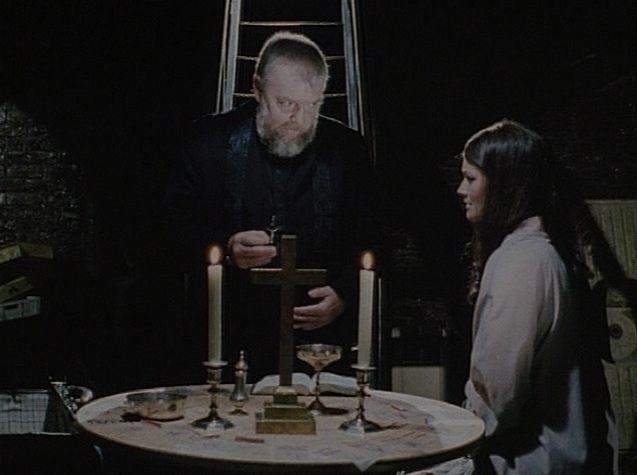
Lawrence Gordon Clark, Bob Mahoney and Rob Walker - 1995
Synapse Film Region 1 DVD (Two discs)
Not to be confused with any television series with the name, Thriller, this was a limited, five episode British series. Unlike Hammer House of Horror, which I reviewed three months ago, there is neither the cachet of the Hammer name, nor the curiosity of seeing a handful of past and future stars in action. I'm not certain that having a series filmed in Yorkshire would mean much to stateside viewers.
These might be best described as psychological horror stories, but I suspect that the producers just wanted to cut corners by limiting the special effects budget. There's also a bit of repetition going on, with people hit by cars, automobile accidents, and flashes of nudity with two women in different episodes, although to be fair, one is in the shower, and the other is in the tub. The music in one episode sounds like a fair approximation of Bernard Herrmann's Psycho score, while another episode clearly has a death scene unmistakably lifted from Suspiria. Am I assuming too much that the name of one of the characters, Peter Walker, was meant as a kind of in-joke?

Actually, that episode with its references to some of the more extreme examples of horror movies in the Seventies, "The Man who didn't Believe in Ghosts", is the best of the five. The story of a writer whose career is to debunk the existence of the paranormal has just enough intrigue, as the writer literally stakes his life to prove that what ever is happening in his own house has a rational explanation. The first episode, "Prophesy", about a seance that revives the spirit of a 17th Century Satanist, causing death and disaster to the participants, is also of interest. On the other hand, "Toby" might only be notable for the sight of a woman breast feeding her invisible ghost baby. There is an episode of a creepy guy who lives in an abandoned old church, goaded to do very bad things by a friend who may, or may not, be real. The final episode, about ritual deaths of kidnapped children, and references the historical, and horrific origins, of nursery rhymes, is more interesting in conception than in, ahem, execution.
The biggest mystery concerning Chiller is where are the opening credits? Without checking IMDb, there's no way to know who wrote or directed any of the episodes. It's strange that the main credits are missing, and that Synapse would release the DVDs in this fashion. A written supplement with those credits, and maybe a few notes explaining why this series might be considered important, would have been helpful.
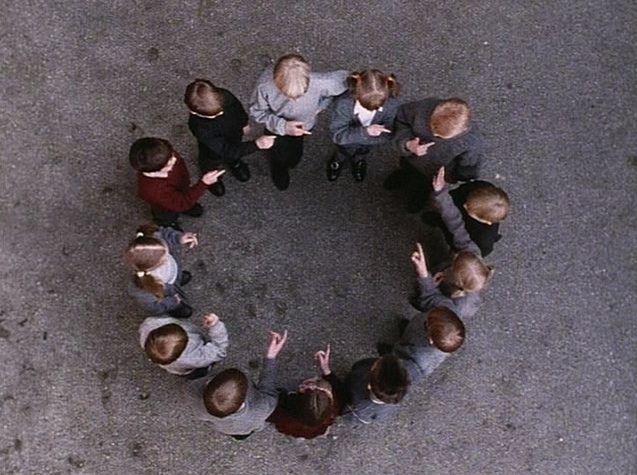
Posted by Peter Nellhaus at 08:17 AM
December 03, 2012
X Game
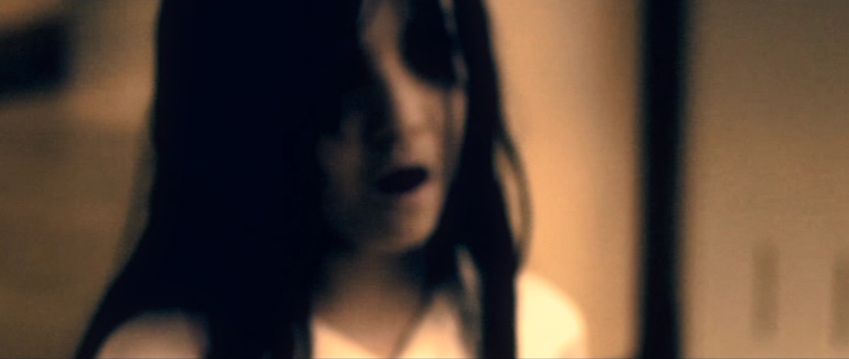
X gemu
Yohei Fukuda - 2010
Danger After Dark Region 1 DVD
I don't know if anyone reading recalls a story in the news about a an altercation at a high school reunion. One guy took out his anger at another guy decades after they had been in school together. As I recall, the guy doing the beating was the one previously bullied. Better known is the recounting of a high school Mitt Romney leading his friends in holding down a student who went against the grain simply by choosing to wear his hair a little longer, bleached blond. The other students remember Romney chopping off the students hair with scissors, and the sense of humiliation that followed. Romney claimed not to remember the incident. There may be some with nostalgia regarding their school days. For others, school was a way of marking time at best, or with painful memories that never go away.
X Game is a violent fantasy film about a bullied sixth grade girl's revenge on those who tormenter her the most. Those guilty include a teacher who indirectly condones the activity, and a boy who has appeared to try to stop the bullying. Four students, now older high school students, find themselves in a room made to look like their old classroom. The X Game consists of thirteen forms of punishment, written on red paper, pulled out of a special box by the victim. The four students receive heightened forms of punishment, more painful variations of the kind of torture done when younger. Revenge is less than sweet, and goes beyond the classroom.

The film is adapted from a novel by popular novelist YusukeYamada. I am assuming the film was made for the same audience as those who read the books, making this a sharp contrast to English language movies about teen wizards and vampires. Yamada is not too much older than his readers, 31, and to the best of my knowledge has no books available in English.
As for director Yohei Fukuda, this film represents a big leap over the film that first brought him attention, Chanbara Beauty. What ever that film had or didn't have in terms of story or style was more than made up for in the endearing image of Eri Otoguro wearing a costume of a cowboy hat, boots, and a bikini. The filming here is more polished, with punctuations of low tech video, and extremely rapid flashes of images. Fukuda also finds ways of incorporating images of Xs throughout the film. Yamada has been adapted to film again by Fukuda in another game themed horror film, Bingo.
I normally don't discuss screenplay writers much, but the film was written by Yoichi Minamikawa in a second collaboration with Mari Asato. I've written about Mari Asato previously. For me this is worth noting as Asato is the only Japanese writer-director who I know of working consistently in the horror genre, with films generally aimed towards an older teen and young adult audience.
There are some ideas, both thoughtful and provocative, worth considering, that are hopefully not entirely subsumed within the rubric of "extreme cinema".
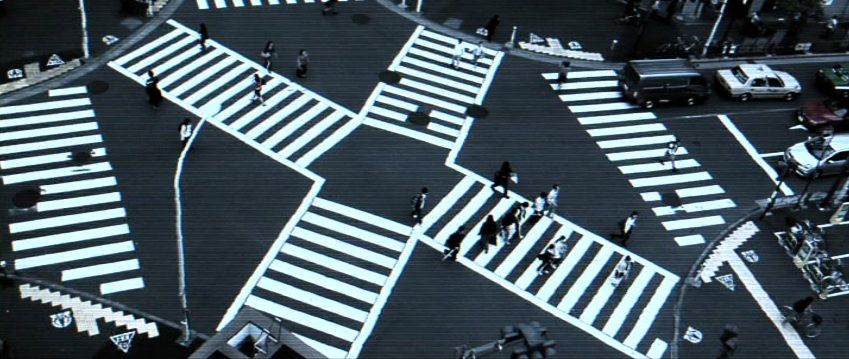
Posted by Peter Nellhaus at 08:21 AM
December 02, 2012
Coffee Break

Farley Granger and Jeanne Crain in The Gift of the Magi (Henry King - 1952)
Posted by Peter Nellhaus at 08:59 AM
